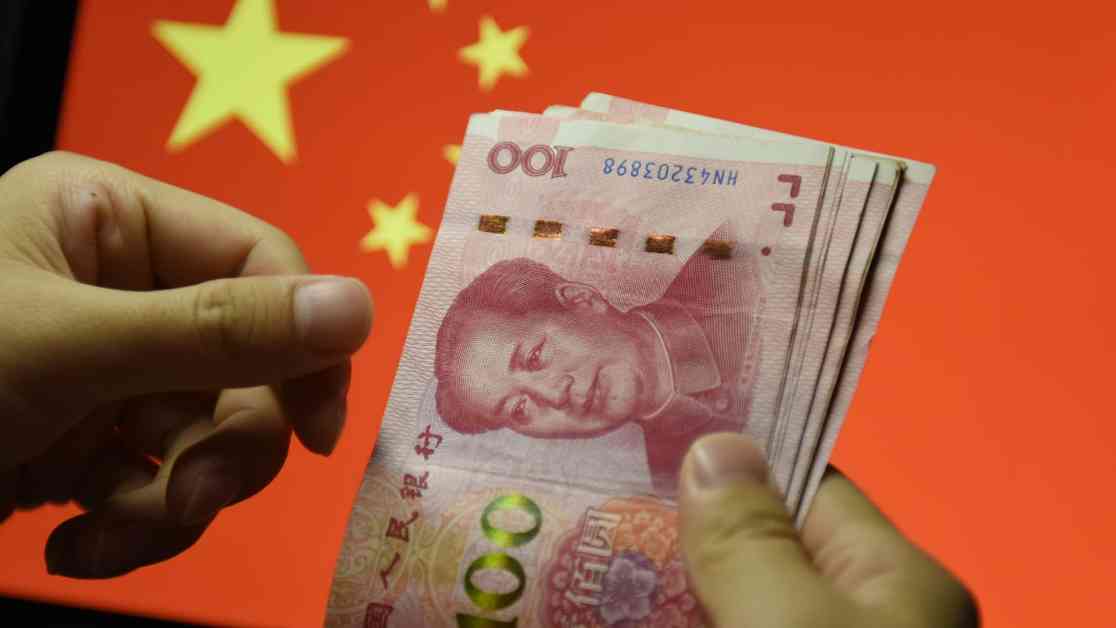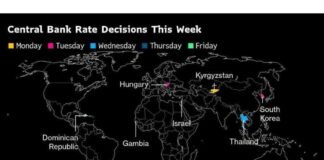China’s New Loans Hit 15-Year Low: Investors Urged to Keep Their Cool
In a surprising turn of events, China’s new bank loans have plummeted to a 15-year low in July. This decline has sparked concerns among analysts about the state of the Chinese economy. Despite the alarming figures, experts are advising investors to remain calm and not jump to conclusions just yet.
The latest data shows that new loans in China’s economy totaled only 260 billion yuan ($36.28 billion) in July. This represents an alarming 88% drop from the previous year and falls short of the expected 450 billion yuan. While these numbers may seem alarming at first glance, it’s important to dig deeper into the reasons behind this significant decline.
Factors Contributing to the Decline in New Loans
Iris Tan, a senior equity analyst at Morningstar, points to weakening credit demand and spending by both corporations and households as key drivers behind the decline in new loans. Household short-term loans have taken a significant hit, suggesting a lack of consumer confidence and spending. On the corporate side, loans are still expanding but at a slower pace, largely due to discounted bank notes.
However, it’s not just economic factors at play here. Tan highlights regulatory measures as a significant contributor to the decline in short-term corporate loans. These measures aim to prevent the “self-circulating” of money within the financial system. This practice involves large enterprises borrowing money at low costs and depositing it in banks as high-yield structured deposits, rather than using it for operations or investments.
Jasmine Duan, a senior investment strategist at RBC Wealth Management Asia, emphasizes that the new loans are not necessarily finding their way into the real economy. Instead, they are being channeled into financial arbitrage activities. The regulatory crackdown by the People’s Bank of China (PBOC) is aimed at curbing such practices and ensuring that credit growth is channeled into productive areas of the economy.
Market Response and Outlook
Nomura, in a recent note, indicated that there is no immediate end in sight for the regulatory crackdown on new loans. The firm expects weak credit growth in the coming months, particularly for RMB loans. Despite these challenges, Tan advises the market not to panic over monthly fluctuations in data, as July typically sees a dip in credit growth.
Looking at the year-to-date bank loan growth, Tan notes that it remains relatively stable at 8.7%, compared to 8.8% in June. This aligns with the government’s efforts to slow down credit growth and mitigate risks in the banking sector. The slower but steady credit growth is seen as beneficial for banks, reducing equity consumption and lowering the risks associated with aggressive loan pricing competition.
While these measures may provide some stability in the banking sector, concerns about the broader Chinese economy persist. Duan highlights the subdued outlook among households and corporations, citing the ongoing challenges in the property market as a key factor holding back loan growth. Without a significant turnaround in the property sector, it may be difficult to see a substantial uptick in loan growth.
Conclusion
In conclusion, while the decline in new loans may raise some red flags about the state of the Chinese economy, experts are urging investors to exercise caution and avoid knee-jerk reactions. The regulatory measures and seasonal factors contributing to the decline are part of a broader effort to ensure sustainable and responsible lending practices in China. By staying informed and monitoring developments in the market, investors can navigate these challenges and make informed decisions about their investments in the Chinese economy.






















